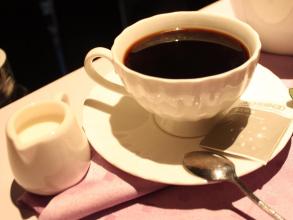Frequently Asked Questions about espresso coffee

a. Selection of raw beans
TX who knows something about coffee knows that at present, common coffee beans can be simply divided into three categories: Robusta, commercial Arabica and boutique coffee.
The choice of espresso beans, according to the maker's grasp of the quality, will also face the choice of these three types of coffee beans.
From a cost point of view, prices from high to low are naturally boutique coffee, commercial Arabica, Robusta.
In terms of historical factors, espresso culture originated in Italy. At the beginning of its popularity, the coffee beans used were indeed Robusta. Later, with the improvement of living standards and the emphasis on quality and health, they turned to Arabica and then fine coffee.
According to the store's understanding of cost and quality, the coffee beans used in Italian concentrate are different.
b. The effect of baking
The common way to make a single cup of coffee is hand-brewed coffee, or hand-made coffee.
The biggest selling point of single coffee is the flavor of raw beans. In order to maintain these unique flavors, raw beans used for single coffee are generally roasted moderately.
Italian concentration is usually deep baking.
The quality of raw beans is so poor that under light baking, the defective taste can not be completely hidden, which is finally reflected in the cup.
Even if the quality of raw beans is defective, it is easy to be covered up under re-drying.
c. The influence of drinking mode
The main consumption mode of espresso is to make coffee drinks, adding milk, sugar, cream, wine and other ingredients.
A single cup of coffee, usually drunk directly, to feel the taste of pure coffee.
Italian concentration, even if the flavor defects of raw beans are not covered up into the cup, the addition of other ingredients will also help cover up.
Single coffee, defective flavor into the cup, there is nothing to hide.
To sum up, it may lead to better quality beans for single coffee and poor beans for Italian concentrate.
So, is the quality of raw beans really not reflected in the drink? Of course I will!
When it comes to the taste of espresso, people will use one word to describe it, bitter.
This sense of taste is related to habits, as well as to the quality of beans.
From the perspective of coffee tasting, espresso made from high-quality raw beans will be obviously superior in aroma and flavor richness. Even if we don't know much about espresso, relying solely on intuition and the rich aroma can give drinkers a glimpse of the quality of coffee beans.
Important Notice :
前街咖啡 FrontStreet Coffee has moved to new addredd:
FrontStreet Coffee Address: 315,Donghua East Road,GuangZhou
Tel:020 38364473
- Prev

Basic knowledge | detailed explanation of heart-shaped coffee flower
Coffee, an alien species, is now loved by more and more people. Drinking coffee is not only a health but also a fashion. Let's take a look at how baristas make a perfect cup of coffee flowers. Coffee coffeefest has never been clearly defined in the coffee industry. It can only be said that it is played by cappuccino and latte.
- Next

Five benefits of having a cup of coffee before working out
When I have a cup of coffee in the morning, I feel refreshed and energetic. And new research has found that having a cup of coffee before working out also has many benefits. Recently, a study published in the International Journal of Sports Nutrition and Metabolism (Journal of Sport Nutrition and Exercise Metabolism) shows that trained athletes who take caffeine before training are in good health.
Related
- Beginners will see the "Coffee pull flower" guide!
- What is the difference between ice blog purified milk and ordinary milk coffee?
- Why is the Philippines the largest producer of crops in Liberia?
- For coffee extraction, should the fine powder be retained?
- How does extracted espresso fill pressed powder? How much strength does it take to press the powder?
- How to make jasmine cold extract coffee? Is the jasmine + latte good?
- Will this little toy really make the coffee taste better? How does Lily Drip affect coffee extraction?
- Will the action of slapping the filter cup also affect coffee extraction?
- What's the difference between powder-to-water ratio and powder-to-liquid ratio?
- What is the Ethiopian local species? What does it have to do with Heirloom native species?

